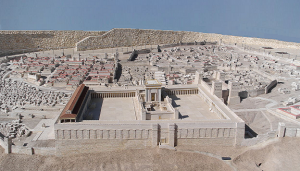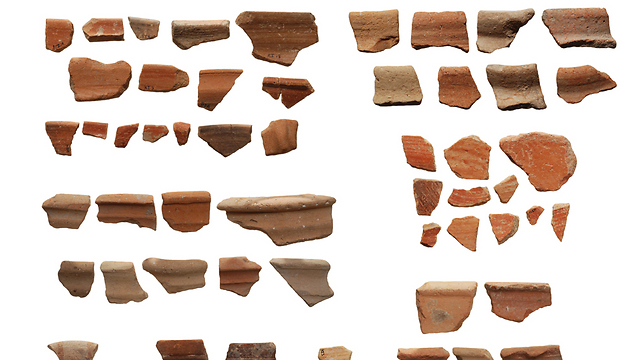
The destruction of the First and Second Temples, supported by archaeological findings, coins, burnt houses, etc., including various historical testimonies, all support the biblical accounts of both Temples’ destruction.
By Tal Barkai
For nearly two thousand years, Jews have mourned the destruction of the Temples. They have traditionally relied on the account of the First Temple’s destruction as told in the Bible and the external accounts for the destruction of the Second Temple—but over the past decade, archaeological findings supporting the Jewish canon have been adding evidence.
Prof. Aren Maeir, an expert on the First-Temple period from Bar Ilan University’s Department of Land of Israel Studies and Archaeology, “From a chronological historical standpoint, we’re talking about the year 586 BCE, when Jerusalem was destroyed. There are accounts of the siege on Jerusalem. In the Jewish Quarter, there’s a tower that’s an Israelite fortification on which you can actually see the arrowheads that the Babylonians shot at the Kingdom of Judea and that soldiers of the Judean Kingdom fired back. There’s a difference between the Babylonian arrow and the Judean arrow.Remnants have also been found in excavations in the City of David, layers that date to the eve of the destruction. Throughout the Kingdom of Judea at the end of the Iron Age before the destruction of Jerusalem, we have evidence of more than a few other sites that have the layer from the destruction.

While the destruction of the First Temple is described in detail in the Bible, the destruction of its successor is not, and most of the information on it comes from the historian Josephus Flavius. The archaeological evidence uncovered also seems to support this information.
Prof. Boaz Zissu, the head of Bar Ilan University’s Department of Land of Israel Studies and Archaeology and an expert on the Second-Temple period, said, “The archaeological findings support, complete, expand what we learn from Josephus.”
RELATED:
- UN: Jews are indigenous to Israel
- Proof of Ancient Jewish Existence in Israel
- Israel’s Archaeological Treasures
He continued, “In Jerusalem, when you dig in the area of the Jewish Quarter and remove the later layers, you’ll reach the complete destruction. You’ll find houses that sometimes burnt with their residents inside, or the remains of their residents. One of the more exciting finds was a cut-off arm, which was found nearby a spear.
“In a structure that was destroyed in a fire in 70 CE, we’ve found coins that the rebels minted themselves in Jerusalem with writing in Hebrew… At the foot of the Western Wall, a street was uncovered that had on it remnants of the destruction of the Temple.

One of the most ancient synagogues in Israel, Gamla Synagogue in Golan Heights, built during the second Temple Period in the first century CE. – Photo: Wikipedia Commons/Hanay
“There is also lots of evidence in the Galilee. In Yodfat and in Gamla, evidence has been found of the siege, of the destruction, of the fighting. The findings here are unequivocal. If we go to fortresses in the desert, of which Masada is a very famous example, and ditto for Herodium, which also has the story of the Bar Kochba Revolt.
“Then Josephus speaks of a 1,100,000 deaths as a result of the Great Revolt. We learned of the result of the Bar Kochba Revolt from a Roman source, Cassius Dio. He gives as a number 580,000 Jews who were killed in battle alone. But doesn’t count the civilian population at the end of the Bar Kochba Revolt, but he tells of 985 villages or towns and 50 fortresses. Archaeology teaches us that those numbers that Cassius Dio records are apparently trustworthy.”
View original Ynet publication at:
http://www.ynetnews.com/articles/0,7340,L-4841735,00.html







 Israeli New Shekel Exchange Rate
Israeli New Shekel Exchange Rate